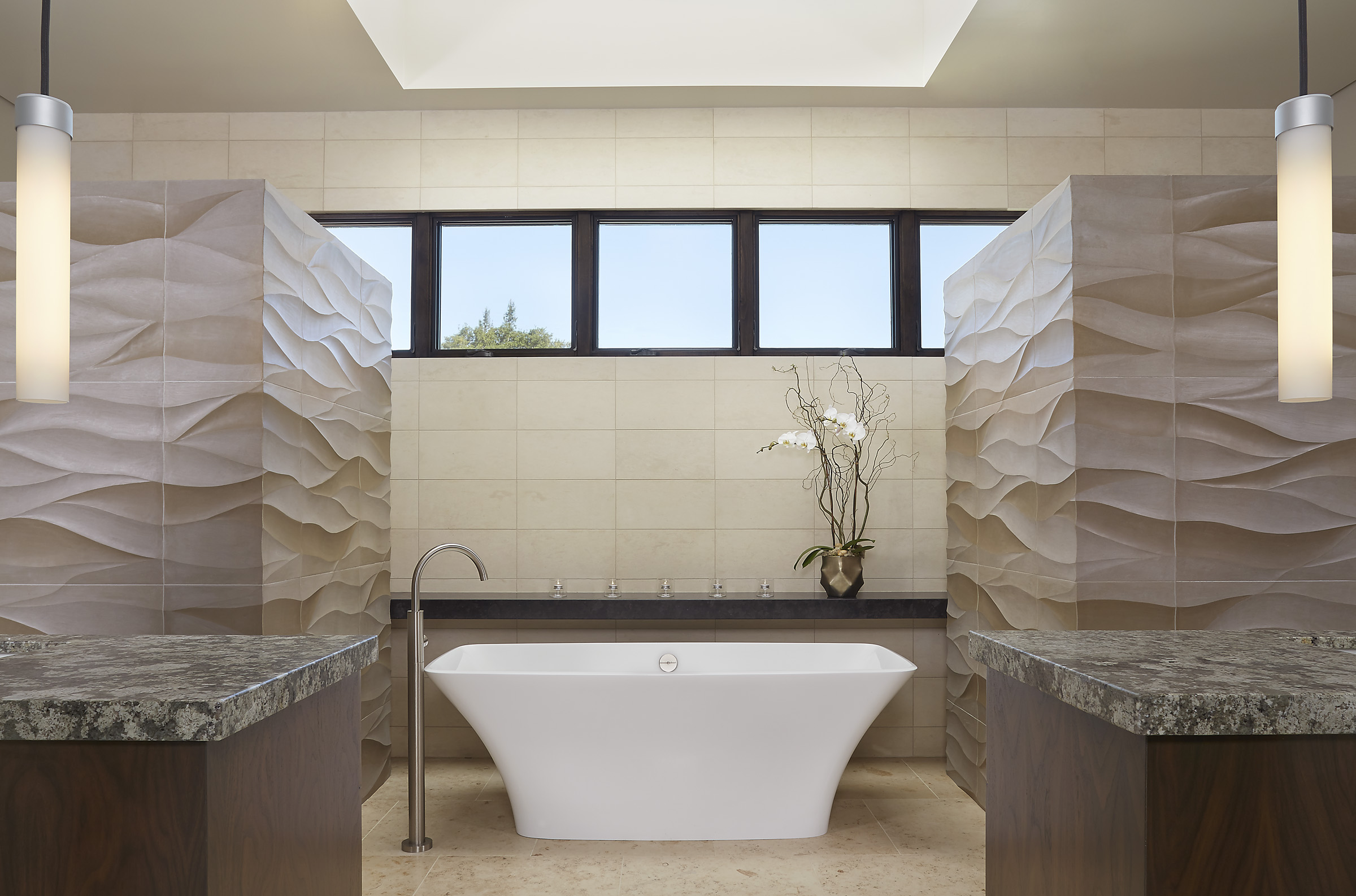The development of a successful material palette is an exercise that is at the core of the design process. If you are remodeling take cues from existing materials and surfaces, if you are building from the ground up collaborate with the architect so that the interior and exterior design relate to one another.
Selecting Materials:
Next, identify key materials to form a foundation for your palette. Consider items such as a flooring that runs through the main areas of your home, a trim color to use throughout the house, and any other elements you’d like use on a recurring basis. Build off your initial palette selections to add interest while balancing contrast, texture, pattern and color. In any given space there are several different elements that need to work together. Determine which element you want to be a statement piece such as a beautiful stone slab, a boldly colored tile, or a patterned wallcovering. Remember that balancing accents with subtle neutrals is key, if every material is a strong focal piece than in the end, none of them will have the space to shine.
Tricks and Tips:
● Don’t reinvent the wheel in each space. Find a material that you like and utilize it, or a variation thereof, in multiple places. For example: Consider using the same tile floor in several bathrooms. If you want to change it up, lay it in a different pattern. This will help establish a sense of continuity in your palette, will give you a solid starting point in each room and may even help with your bottom line as materials are often cheaper in bulk.
● Don’t forget to plan the unexpected. Accent materials cleverly applied give your home personality and character. Don’t be afraid to be bold, but remember that going bold everywhere can become overwhelming and cause elements to compete for attention.
● Order samples and create a finish board. Seeing the different elements in person is invaluable. If you can’t get a physical sample collect installation images or ask to see the material installed in a showroom or public space. If all else fails try to order an individual piece when free samples cannot be provided.
● Utilize material remnants. If you are buying stone slabs for a kitchen or bathroom, ask your stone fabricator if there are any remnants left. These pieces may be utilized for a powder room or small laundry counter.
● Is your finish sample board looking a little bland? Remember that finishes alone do not form the entire interior palette. Make sure that your interior finishes provide enough color, texture and contrast to be interesting without overpowering your space. These are the foundation for your interior design but there are many more layers to come which will add additional visual interest: Furnishings, Lighting, Art & Accessories etc. If you gravitate towards simple neutral furnishings than you can afford to add some additional interest to your interior finishes. Likewise, If you tend to select bold furniture and artwork, you may want to strategically tone down your interior palette so that it supports these furnishings instead of competing with them.
● Balance beauty with function. While we have predominantly focused on developing an aesthetically successful palette, remember that each material is unique and comes with its own set of inherent characteristics and may not be suitable for use in all applications. Research each material and specify accordingly. Finish dealers and manufacturers are a great resource for this information as is your local professional interior designer.
Work with Ussimilar articles: Designing w/ Wallcoverings | Creating Interior-Exterior Design Space | Powder Room Design| Selecting Furniture: A Basic Overview
recent projects: Los Gatos Home Remodel | Los Altos – New Home | Mountain View – New Home
Contact our Los Gatos Interior Design Company for amazing results at (408) 560-9604 or submit a form request.


